More recently, I took up photography. Now the Painted Bunting is a favored subject. I have many shots of them at bird feeders, but I strive to capture their image in more natural surroundings.
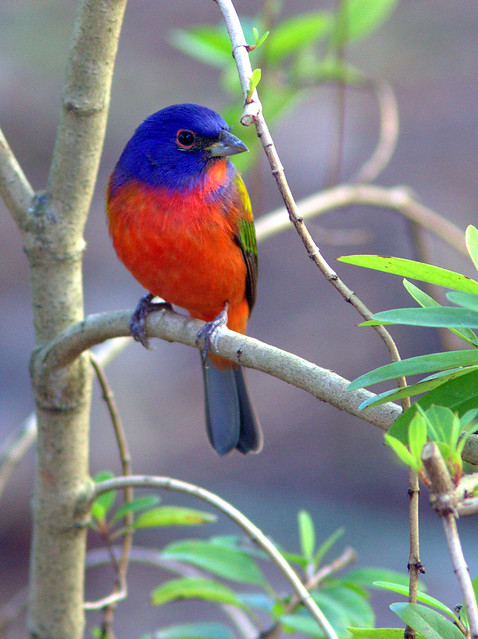
There are two breeding populations of Painted Buntings in the US. One occupies a large area centered in "Arklatex" (Texas, Louisiana, Arkansas) and nearby Oklahoma. The other, smaller area is along the southeastern Atlantic coast, from the Carolinas into northern Florida. The western population winters in coastal Mexico and Central America, while we in South Florida enjoy those migrating through the state to Cuba and the Bahamas, many of which remain here all winter.
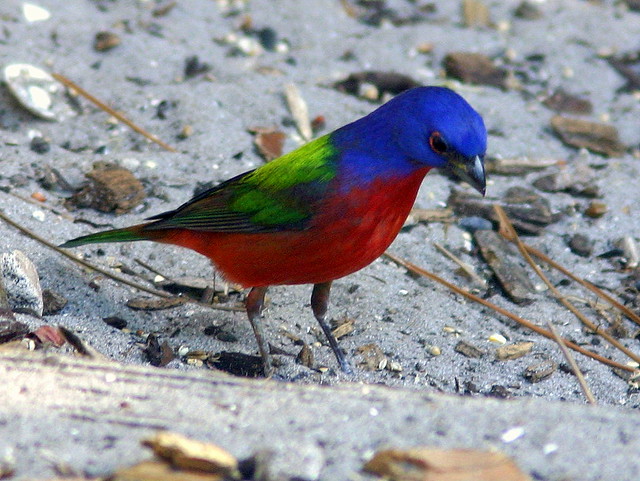
The eastern population is adversely affected by human development of the coastal wetlands. Their numbers have steadily decreased, dropping by almost two-thirds since 1966. Ref: http://www.allaboutbirds.org/guide/Painted_Bunting/lifehistory
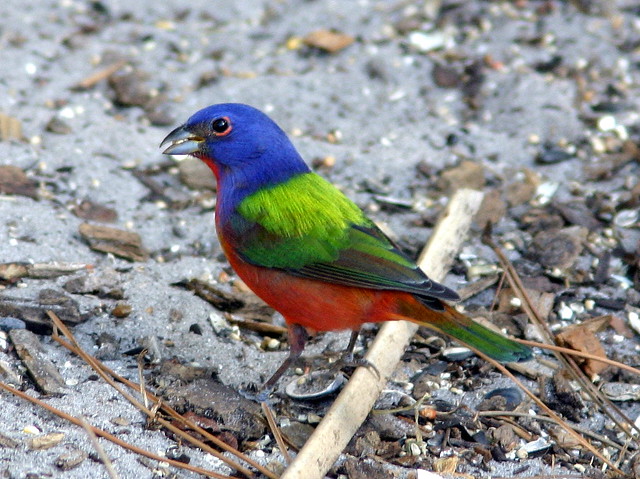
Unfortunately, they are popular cage birds in Latin America and even in Miami. Despite their protection under the Migratory Bird Treaty, they are commonly trapped in south Florida, in residential neighborhoods and even in and immediately outside Everglades National Park.
Excerpt from The Danger of Beauty: "Our preliminary data analysis shows that for the domestic trade in Mexico alone, more than 100,000 Painted Buntings were trapped from 1984 through 2000, an average of 5,800 birds per year. This does not include any information on the illegal trade, which is commonplace but very difficult to document..."
A frustrating fact is that if birders find traps or even see them being captured the perpetrators cannot be arrested unless the crime is witnessed by a law enforcement officer. Read more here, with photos of trapped buntings: http://www.tropicalaudubon.org/trapping.html
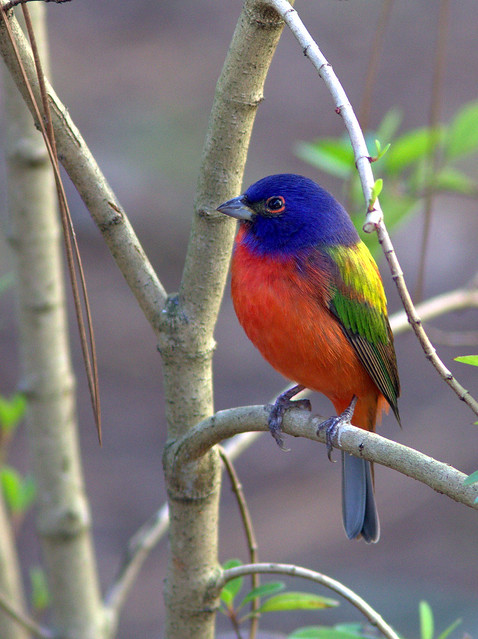
I have unfairly favored the males in the above images. Females are beautiful in their own right. They are so green that they can sometimes remind one of small parrots.

First year males can resemble the females, so green birds greatly outnumber the brightly colored males in the wetlands near our south Florida home.

A few birds will stray out of their normal range, especially during migration, and they have been reported along the east coast as far north as New York.
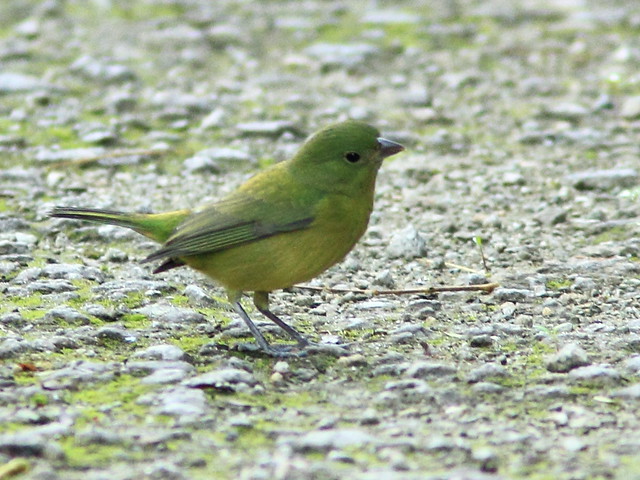
I suffer no shortage of pictures of the females!
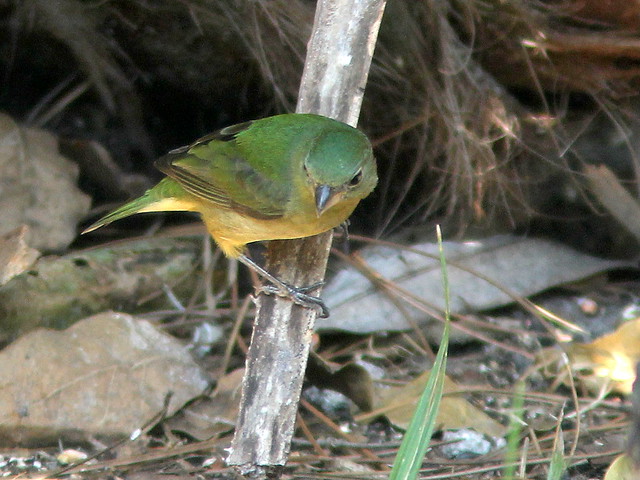
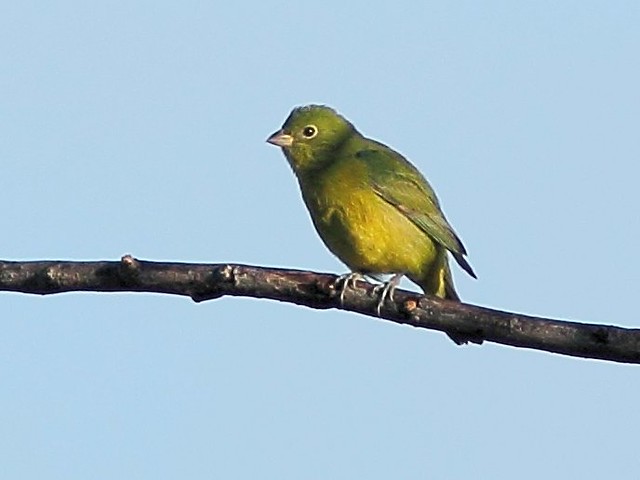

WOW Ken! This is so beautiful, and reading about your interest was quite interesting!
ReplyDeleteI haven't seen your other posts, and have landed here looking for the original photographer of the Facebook post at https://www.facebook.com/groups/flowersnbirds/ group. I really feel bad when someone's effortful work gets displayed somewhere without any credit to the creator. In most cases, the owner of the art is unknown simply because when people share and reshare, the origin gets lost. The solution can be to put a light watermark of your name and website on each photo that helps trace the originality. Your photography is amazing, and I hope you put your notes on photos as watermark. I will see more of your posts now :)